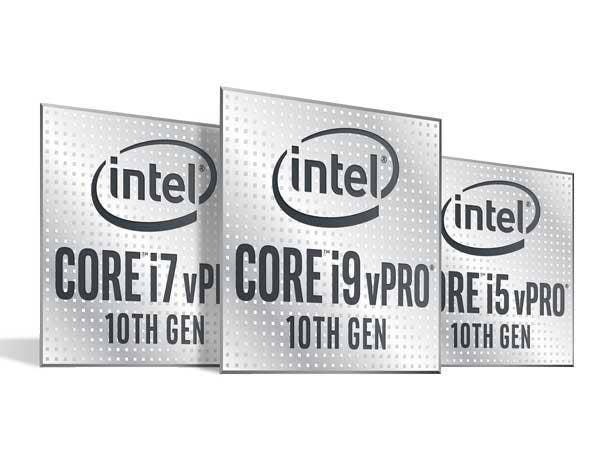New 10th-Gen Intel vPro CPUs Expand Security For Business PCs
'Out of the box, a vPro platform is going to be more secure than a consumer-only platform given the work that we do,' Intel's Stephanie Hallford says of the new 10th-generation, enterprise-grade vPro processors for laptops and PCs.

Intel has launched new 10th-generation, enterprise-grade vPro processors for laptops and desktop PCs, bringing new silicon-level security and Wi-Fi features for businesses.
The Wednesday launch of the new 14-nanometer vPro processors, which consist of 27 SKUs across the company's Core and Xeon workstation brands, come as rival AMD seeks to "aggressively" incentivize partners to sell the new Ryzen Pro 4000 processors in its enterprise management lineup.
[Related: Intel vPro Is Making Big Bets On Partner, Ecosystem Enablement, Exec Says]
Stephanie Hallford, vice president of the Client Computing Group and general manager of business client platforms at Intel, said between the company's 14 years of running the vPro remote management business and the 200 million vPro systems out in the wild, the chipmaker is better equipped than the competition to handle the "complexity and scale" of enterprise PC deployments.
"It's really about trust and the criticality of business networks, and I think there's a strong lineage and background that Intel brings to that," she said in a briefing.
Like Intel's previous vPro processors, the new models come with silicon-level features for remote management, such Intel Active Management Technology, which became cloud-enabled with Endpoint Management Assistant. The platform also includes the Intel Stable IT Platform Program, which validates components to ensure lifecycle stability.
With the new processors, however, Intel is promising better performance as well as new and expanded security and Wi-Fi features. On the Wi-Fi side, Hallford said the new processors come with support for Intel's integrated Wi-Fi 6 (Gig+) technology, which comes with new WPA3 security features for authentication and encryption while enabling four times greater capacity with Wi-Fi 6 access points.
"You're looking at reduced interference, so as we help route different local traffic and tune out noise from other networks you're able to operate in dense environments much more effectively," she said.
As for security, Intel's 10th-generation vPro processors mark the first products in the vPro lineup to require OEMs to enable the Intel Hardware Shield set of build-in hardware security features that were introduced with the 2019 launch of the Whiskey Lake vPro processors, as Hallford recently told CRN.
"Out of the box, a vPro platform is going to be more secure than a consumer-only platform given the work that we do," Hallford said.
With Intel Hardware Shield, Hallford said, the vPro platform protects the system underneath the operating system at the BIOS level. She added that the company has also created with integrations for Windows 10 with Microsoft so that BIOS-level issues can be surfaced to the operating system.
"We build in BIOS-level protections and if there's an attack under the OS, then we can help lock down any of that you know mission critical information in the BIOS," she said.
New to Intel Hardware Shield for the new vPro processors is an advanced threat detection capability that utilizes GPU resources, lowering the strain on the CPU when security programs are running.
When asked if vPro's security features can protect against the newly disclosed flaw in Intel's Thunderbolt ports, an Intel spokesperson referred to the company's response to the flaw's disclosure earlier this week. In that statement, the company said major operating systems implemented Kernel Direct Memory Access protection in 2019 to mitigate against such attacks.
The new processors come in three variations: the S-series for Core and Xeon desktop processors, the H-series for high-performance Core and Xeon laptop processors and the U-series for Core ultra-thin laptop processors — which mirrors variants Intel has released for consumers in the past year.
On the desktop side, the S-series is split between Core i9, i7 and i5 and Xeon workstation processors. At the top of the stack are the Intel Core i9-10900K and Intel Xeon W-1290P, both of which come with 10 cores, 20 threads, a 3.7GHz base frequency, a 20 MB cache and 125-watt thermal design power. The fastest processors, base frequency-wise, are the i5-10600K and W-1250P, which both have 4.1GHz.
Compared to a sixth-generation Intel Core i7-6700, the new Intel Core i7-10700 provides up to 44 percent better performance for Microsoft's Power BI analytics software, according to Intel.
At the top of the H-series stack is the Intel Core i9-10885H, which comes with eight cores, 16 threads, a 2.4GHz base frequency and a 16 MB cache. Besides an i5 and an i7, the H-series also has two Xeon workstation-grade laptop processors, which includes the top-line Intel Xeon W-10885M that shares the same base-level specs as the i9. All H-series CPUs have a 45-watt thermal design power.
With the 15-watt U-series, the top processor is the Intel Core i7-10810U, which comes with six cores, 12 threads, a 1.1GHz base frequency and a 12 MB cache. The U-series also includes another i7 and an i5, which both come with four cores and an additional 600-700MHz for base frequency.
Compared to a seventh-generation Intel Core i7-7600U, the new Intel Core i7-10810U provides up to 40 percent better overall application performance and up to 36 percent better office productivity, Intel said.
Bob Venero, CEO of Future Tech Enterprise, a New York-based Intel partner that sells to large enterprise customers, recently told CRN that organizations should wake up to the capabilities offered by vPro as they learn how to manage large fleets of PCs and laptops for their largely remote workforce.
"vPro was a lot of times a second thought for people, and they didn't utilize it as much," he said. "I think now with a home-based workforce, vPro and its remote management capabilities are more important and probably needs to be looked at a lot of these organizations that now have remote workers."